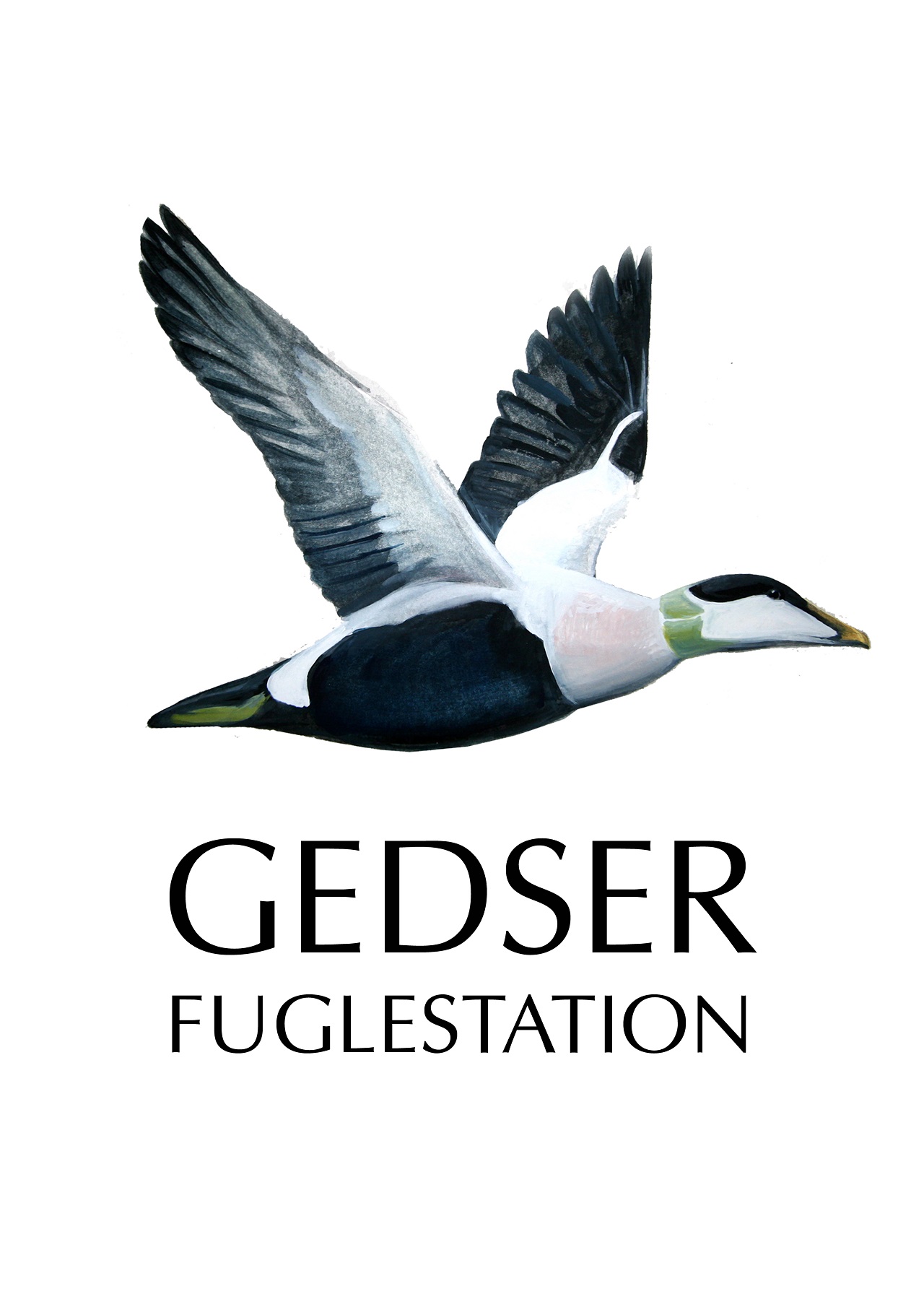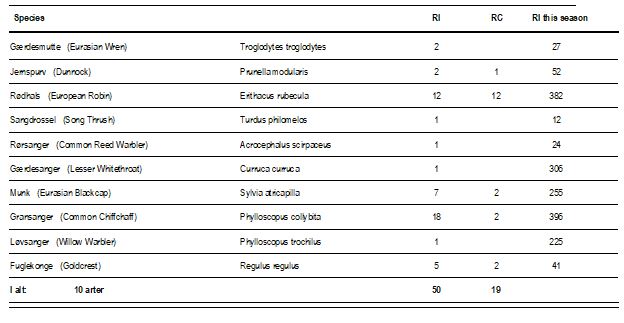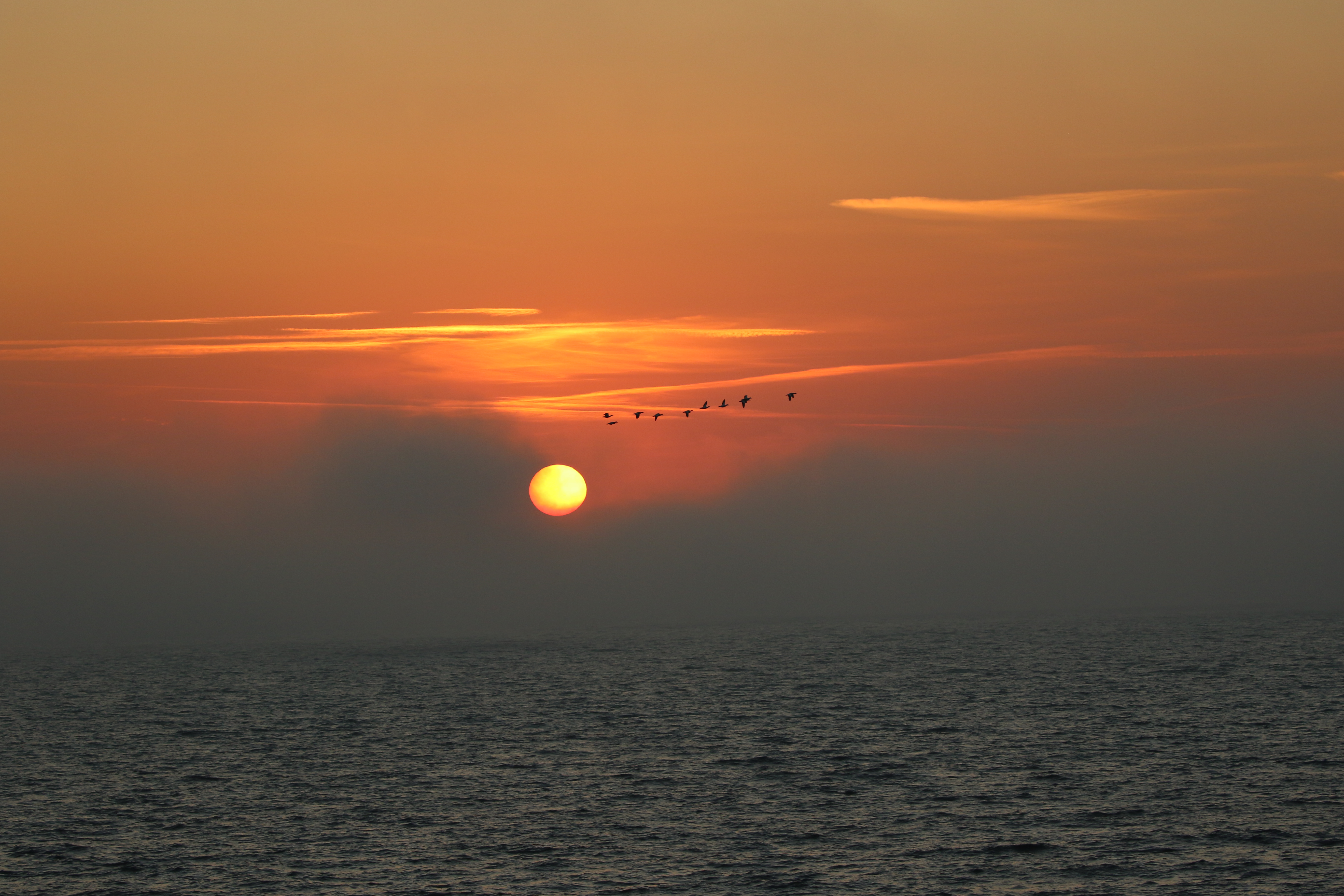Gedser Fuglestation Blog
Her på Gedser Fuglestations blog bringes korte nyheder i dagbogsformat om hændelser på fuglestationen.
The night of the Måler
This morning Robert and I opened the nets together one last time this autumn, from tomorrow on, the ringing team will change a bit. In the first rounds, we were joined by Amanda and Adam from DOF ung. The first rounds were quite slow, the morning was also a bit foggy. Adam ringed a partially leucistic female Blackcap “Munk” which was white on the wing feathers (see picture).
Between these slow rounds, Robert and I had time to check the moth traps, after Robert left home but was so kind to do the moth table and “moth part” of the blog from home.
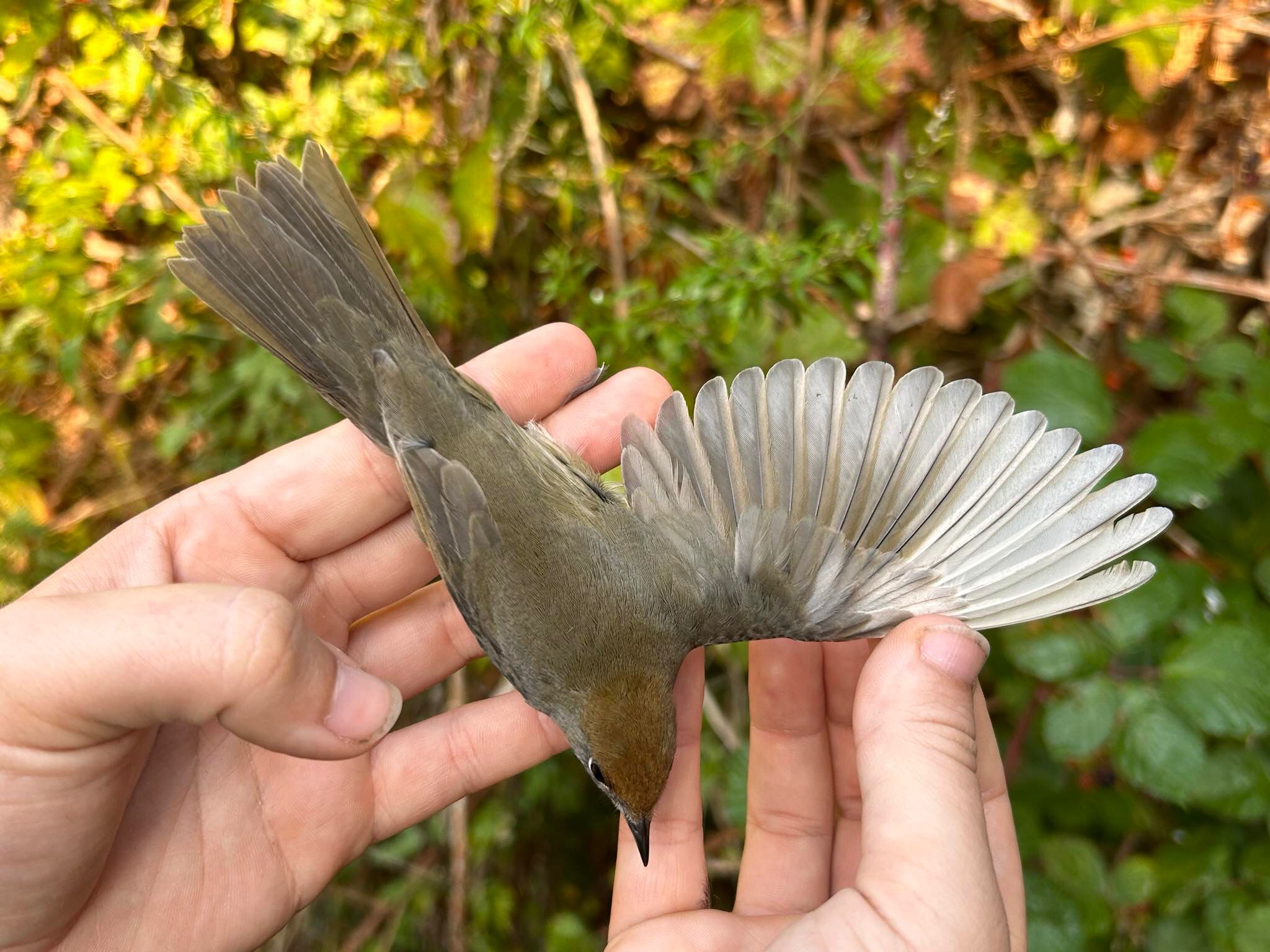
I had said yesterday that it was my last blog, but we caught a few nice moths (see table) and had 5 different Måler species, of which two were new for the season (bold ones in Table), and one was new for me and Hanelie and a lot of other persons that were present at the station (DOF ung). It is the Vandremåler (in English the Gem Moth). In Naturbasen there are now only 7 entries. It is a species of continental Europe and can fly considerable distances over water. It is a relatively rare species in in the north of Europe.
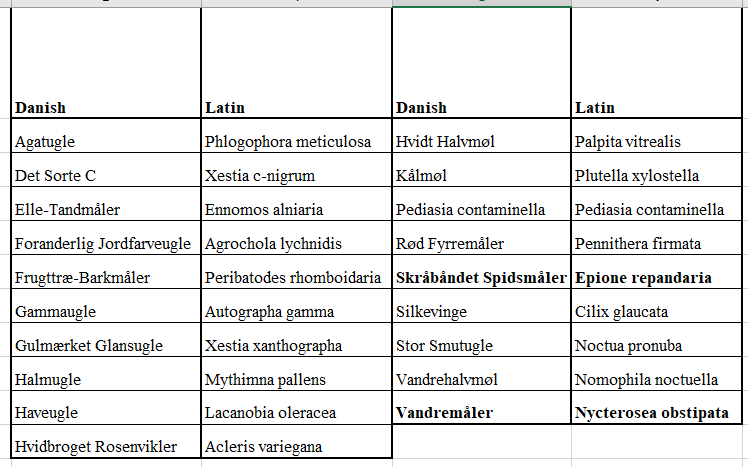
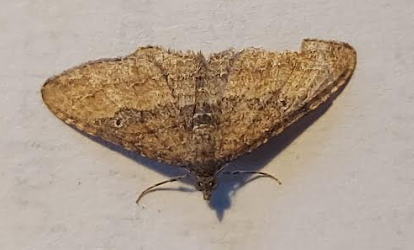
Vandremåler (Gem Moth)
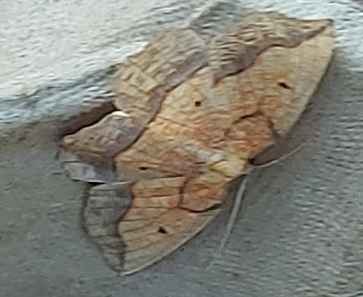
Skråbåndet Spidsmåler (Bordered Beauty)
Migration Count at Gedser Odde
by Lara W
Migration is definitely picking up speed! Overall numbers are increasing daily, with just short of 5800 counted at the tip over the course of the morning, representing 45 species. The vast majority of these were Wigeon/Pibeand (Anas Penelope), flocks of which often passed high up above our heads as they flew south. Up until now, they have tended toward flying out at sea, but today there was a distinct change in behaviour, as many of the birds flew over land. This may have been due to the heavy sea mist present until around 0800, reducing our visibility at one stage to around 100m. It cleared fairly quickly, but whilst all about us, the mist garnered a beautiful sense of calm quiet. Flocks of ducks could just be seen flashing in-between the clouds of mist floating above the water, but were all too quickly swallowed up in the fog.
Photo credit: Lara W
Once the fog had cleared, the sun came out to shine on an almost continual stream of bird-traffic out on the water. As stated above, wigeon numbers were highest, at 3417, followed by 775 Teal/Krikand (Anas crecca), 598 Common scoter/Sortand (Melanitta nigra), and 537 Common Eider/Ederfugl (Somateria mollissima). 94 Pintail/Spidsand (Anas acuta) and 40 Shoveler/Skeand (Anas clypeata) were spotted in mixed flocks, most often with the wigeon, along with a few surprises: 1 Tufted Duck/Troldand (Aythya fuligula), 1 Goldeneye/Hvinand (Bucephala clangula), and a single Common Snipe/Dobbeltbekkasin (Gallinago gallinago). This last looked rather incongruous flapping in its usual brisk manner, trailing behind a group of the much larger eiders.
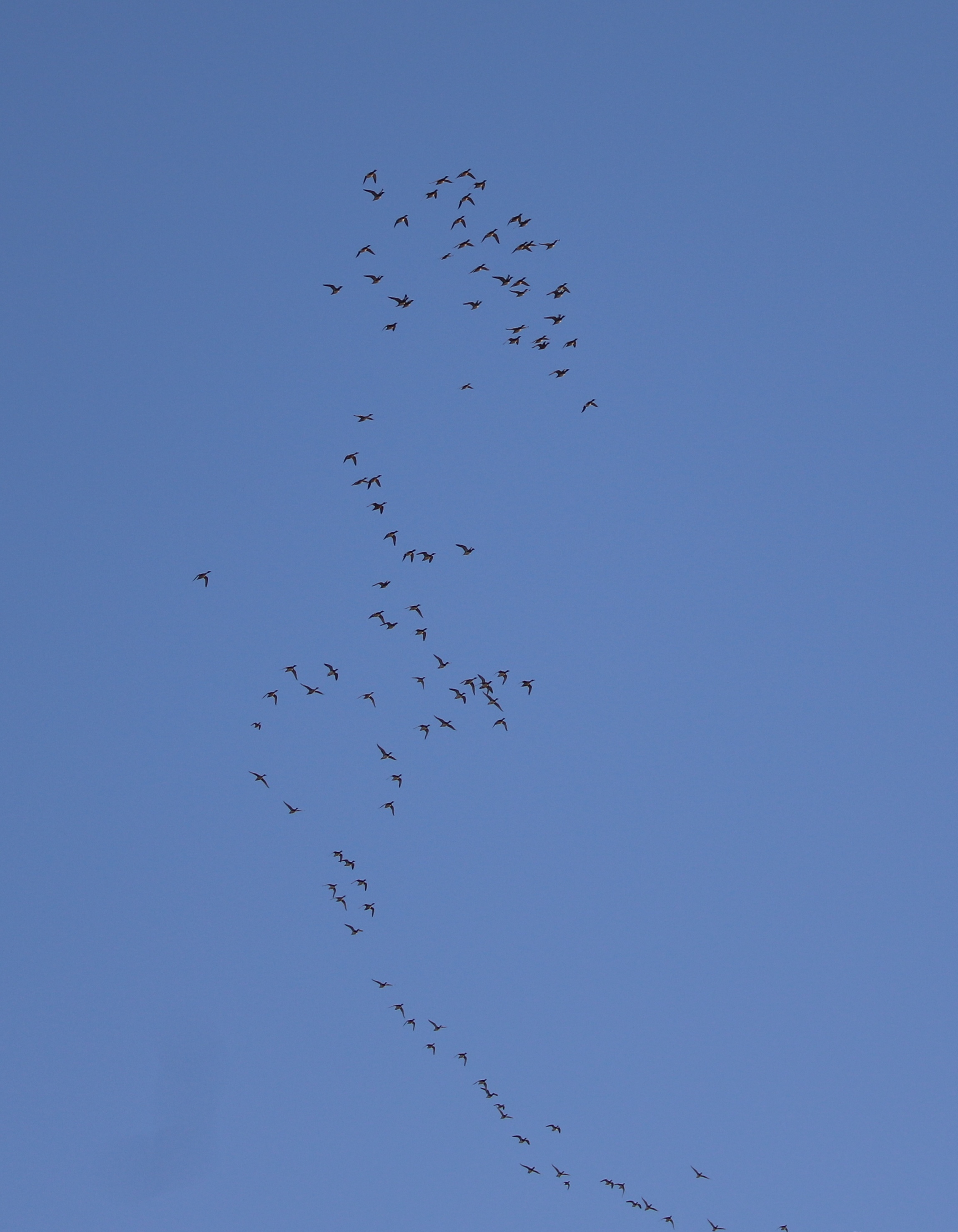
Mixed flock, majority Wigeon, photo credit: Lara W
2 Red-throated Diver/Rødstrubet Lom (Gavia stellata), and 1 Black-throated Diver/Sortstrubet Lom (Gavia arctica) were spotted, with a Red-throat passing right over our heads, allowing a close-up view of this beautiful bird. Further out to sea, 36 Sandwich tern/Splitterne (Thalasseus sandvicensis), 4 Little gull/Dværgmåge (Hydrocoloeus minutus) and one Common gull/Stormmåge (Larus canus) were counted passing south-west. There was very little time to observe behaviours in-between counting the migrating birds, but occasionally I did manage to sneak a glance at foraging terns, loafing eider, and a few larger Herring gull/Sølvmåge (Larus argenteus) attempting to steal food from their smaller cousins – always fun to watch!
Rising up from behind us were a number of raptors and passerines embarking on their migration. This included 32 Starling/Stær (Sturnus vulgaris), 28 White wagtail/Hvid Vipstjert (Motacilla alba), and 18 Chaffinch/Bogfinke (Fringilla coelebs), 30 Sparrowhawk/Spurvehøg (Accipiter nisus), 7 Kestrel/Tårnfalk (Falco tinnunculus), 2 Merlin/Dværgfalk (Falco columbarius), and a single Hobby/Lærkefalk (Falco subbuteo). Of the larger birds of prey, 4 Honey Buzzard/Hvepsevåge (Pernis apivorus) and a single Marsh Harrier/Rørhøg (Circus aeruginosus) were seen. The real excitement came when an Osprey/Fiskeørn (Pandio haliaetus) was spotted far back up the coastline. Winging its way on sure, steady wingbeats, this wonderfully striking bird truly captured our attention, with its prominent sharp bill and stunning white head and collar markings. Looking at the photos I hastily managed to capture, I believe the bird was an adult based on the lack of white markings on the upperparts of the wing and a couple of other features, but it was too far distant to be certain. A second Osprey was spotted crossing the coastline above the harbour to the west, but sadly was just out of the standard migration count time.
A fabulous day, thank you to all who helped with the counting and enthusiastically drew our attention to passing birds!

Golden Plover/Hjejle (Pluvialis apricaria), photo credit: Lara W
At the station; Hanelie Sidhu, Robert Luttik, Vagn Lind, Lara Winsloe, Larissa Britton and DOF ung
